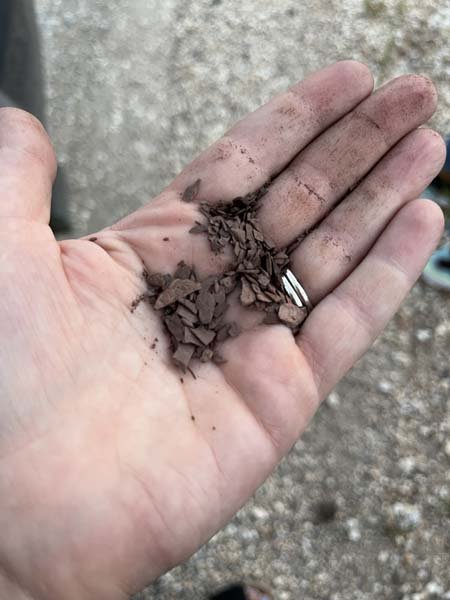Exciting New Changes in Chianti Classico Coming in 2024
Chianti Classico is a veritable Eden for great food and wine, but it’s much more than the one-dimensional view propagated by popular culture and movies like Under the Tuscan Sun.
Located smack on the shin of Italy’s “boot,” Chianti Classico—the historical heartland of Chianti in the center of Tuscany—is a vast jumble of forested hillsides six times the size of Napa Valley. Vineyards criss-cross slopes shared with wild boar and deer, and the resulting wines are as complex and diverse as the landscape itself. Because of this diversity, the challenge of Chianti Classico has been understanding which style of Sangiovese is lurking in any given bottle.
In recent years, however, the regulatory body behind Chianti Classico has reinvested in strategies to make the labyrinthine landscape easier to understand and appreciate in the glass—no easy feat for an ancient region encircled by miles of bureaucratic red tape. But the introduction of Chianti Classico Gran Selezione labels and new subzones is changing the game for the better.
The eleven newly approved subzones of Chianti Classico, known officially as Unità Geografiche Aggiuntive (UGAs), divide the region according to major influences like soil type, altitude, and general exposure, similar to how Napa Valley is sliced into subregions. Given the size of Chianti Classico, it’s shocking the area wasn’t sub-divided sooner, especially because Sangiovese is considered a prism for terroir.
For centuries, Sangiovese, a highly acidic and tannic variety, has delivered Chianti Classico’s famously long-lived wines. Known for its crimson color and medley of tart red fruit and herbal notes, it’s renowned for showcasing minor climatic details—an extra hour of sunshine or slightly sandier soils can significantly change its profile in the glass. The vines soak up these nuances and in turn yield wines ranging from pale, floral-scented reds to full-bodied, tannic wines driven by ripe fruit flavors.
Beginning in 2024, wineries will start printing their UGA onto wine labels, offering a visual indicator of the terroir bottled within—and making it easier to choose between the floral, lightweight bottlings from Lamole and full-throttle powerhouses from Castelnuovo di Berardenga. For now, the appellation names will only appear on Chianti Classico Gran Selezione wines—the region’s highest quality tier —which are made from 100% Sangiovese. Eventually, UGAs may find their way onto Riserva and vintage bottlings of Chianti Classico, but, regardless, an understanding of Chianti Classico’s major subzones offers a roadmap to prime drinking experiences.
“It’s always important to look around you,” explains Alessandro Masnaghetti, an Italian cartographer and wine expert who helped draw the new UGA boundaries. “Wine regions are never just about the soil or altitude but also the slopes and sunlight and everything in between.”
Gaiole, in Southern Chianti Classico near the city of Siena, is the largest UGA and defined by a high concentration of limestone soils. Thanks to its location at the foot of the Monti del Chianti mountain range, it has a mild climate and can produce a variety of vibrant and powerful Chianti Classico wines.
Closest to Florence, the Greve and San Casicano UGAs make up the northern section of Chianti Classico. San Casciano offers a warmer climate and lower elevations and riper, softer wines as a result. Greve, where vineyards overlook the Greve river, has cooler temperatures and schist soils resulting in lighter, brighter wines.
The Panzano UGA lies in the center of Chianti Classico, equidistant between Florence and Siena. This is the famed subzone known as the Conca d’Oro, beloved for its abundant sunshine. Combined with an amphitheater-shaped slope, wines here—like those from Tuscan icon Fontodi—are bold, powerful, and deeply nuanced bottlings with serious cellar potential.
“I believe that territory makes all the difference,” owner and winemaker Giovanni Manetti, who also serves as the president of the Chianti Classico Consortium told me. For example, Fontodi’s Panzano-based bottlings are purple in color with juicy, just-picked plum flavors and firm tannins while their Lamole-based bottlings are ruby red with more fennel, spice, and earthy tones.
Lamole neighbors Panzano to the East, and its vineyards lie predominantly on one, east-facing hillside—resulting in wines with a striking resemblance to one another. Ripened by soft morning sunshine, Lamole Chianti Classicos are known almost exclusively for delicacy and lightness.
At opposite ends of Chianti Classico, San Casciano and Castelnuovo di Berardenga both offer warmer climes for effusive, powerful Sangioveses. Félsina’s famed Chianti Classicos come from the pure Alberese soils of Castelnuovo di Berardenga and showcase the appellation’s penchant for producing powerful, cellar-worthy wines.
Since the days of Dante, these hillsides and their unique combination of shale, limestone, and sand soils have produced kaleidoscopic wines from the Sangiovese grape. Today, the Chianti Classico region still delivers poetry-inspiring wines, and they’re becoming easier than ever to find. Here are my top picks for exploring this fascinating region in your glass:
2020 Fèlsina Berardenga Chianti Classico $21.99
2019 Fèlsina "Colonia" Chianti Classico Gran Selezione $89.99 96WS 95WA
2019 Barone Ricasoli "Roncicone" Chianti Classico Gran Selezione $79.99 98JS 98WA 95DC
2017 Rocca di Montegrossi "San Marcellino" Chianti Classico Gran Selezione (Previously $68) $49.99
2020 Istine "Vigna Istine" Chianti Classico $49.99
- Laura Burgess, K&L Writer and Editor






